by Lloyd Massey, IAC 440170, IAC Chapter 26
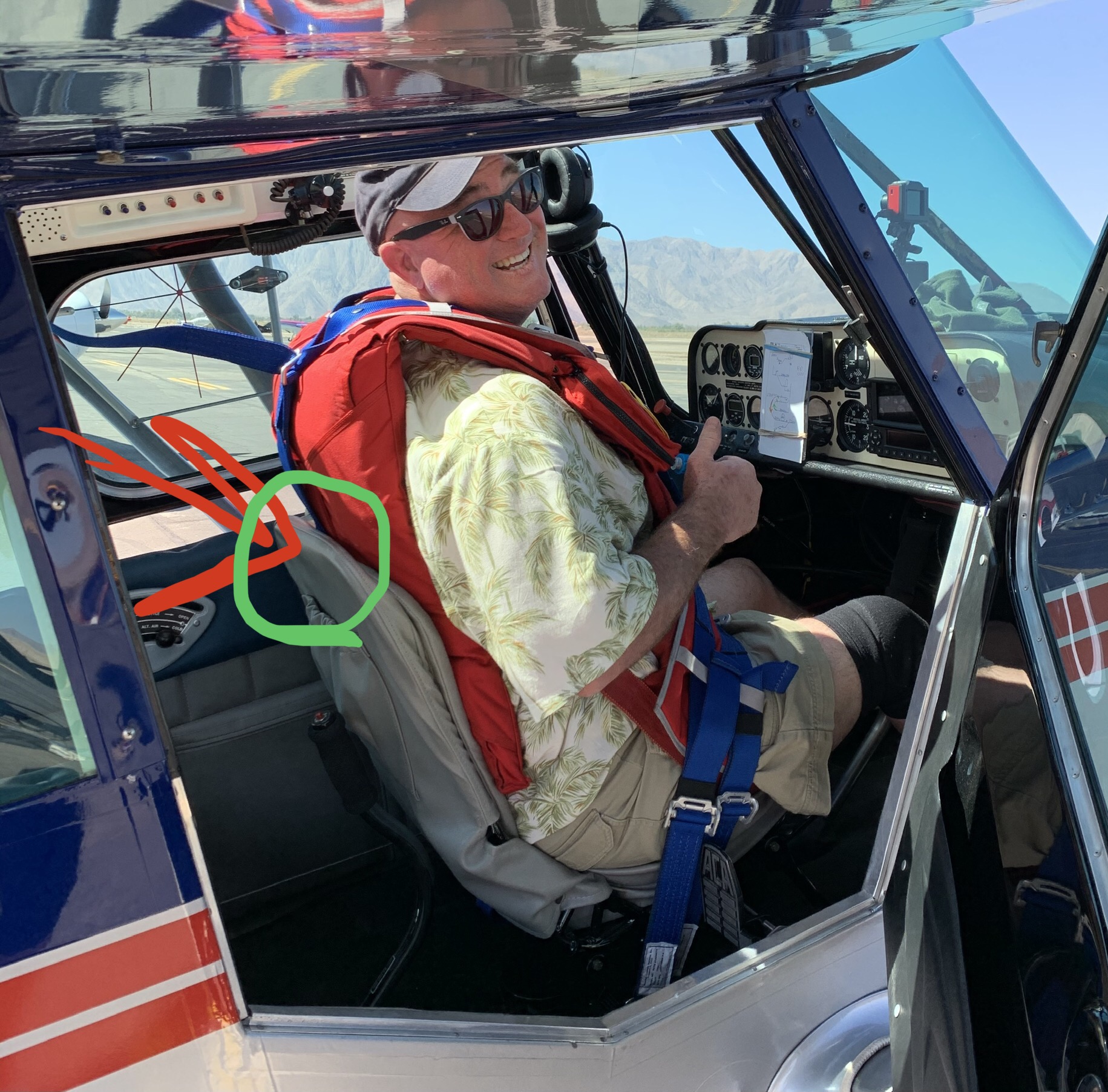
We crawl into our aerobatic mount ready for fun, training and maybe competition. We have checked our plane thoroughly and are sure that it is ready for the aerodynamic challenges ahead. We have our plan for the flight and checked the weather, Aresti card secure to remind us what to do or practice. What about our personal survival equipment? Mainly, your parachute... did you preflight your parachute or simply strap it on like your headset or helmet?
I will admit that I have been flying planes for a living for over 30 years I am new to the IAC/aerobatic world. I have owned my Super Decathlon for a bit over two years. Very quickly after buying the “Bessie” the Decathlon, I purchased two new parachutes and started getting spin training, EMT, and basic acro training from an experienced instructor. Soon after, I competed for the first time in primary. When my parachutes came due for their first 180-day inspection, I called the rigger that was used by many pilots in SZP where I had received my Decathlon and aerobatic training. That was a fortunate call.
My rigger is a real character. Born in New York City, trained as a parachute rigger by the US Navy back in the Vietnam era and more recently a retired cop; if he has an opinion about something, he will tell you. If he thinks he can teach you something to keep you alive he will say it. Since this was his first time inspecting my rig, he wanted to meet me rather than simply have me drop my parachute off. First thing he asked me was how did I “preflight” my rig... preflight, huh? Oh jeez, now he is mad. Each rig will be slightly different, but basically it takes one minute to look at the D ring and make sure it is secure but also can be pulled during a bail out. How about the cable connected to the D ring? Securely attached to the D ring but a bit of smooth play. The routing of the cable (and its protective sheath) is not damaged or crimped. Open the Velcro on the back of the chute and see that the cable ends are secure and have a thin string to hold them in place, they are not bent so as to prevent them from pulling through the hole. He told me that Decathlon’s and the Citabria seats had a metal frame that tended to be right where those pins are and chutes that are used often with those seats tend to have those pins bent in such a manner that they will NOT allow for a proper deployment of the parachute.
He had me put the chute on and corrected small things I did wrong, then sized it to me. He then grilled me on my bail out procedure, as an experienced pilot I always felt confident, but he made me feel initially quite unprepared. We went all the way through the bail out, including actually pulling the ripcord - muscle memory. He then talked me all the way through my return to terra firma under the canopy. He spent about an hour teaching me to understand, respect and know how to care for my potential life saving device. I started feeling a bit more prepared and less ignorant.
I then bought him lunch and listened to his stories and soaked up the learning and experiences from this wealth of knowledge. It would be easy to ignore this aspect of aviation safety that I felt uninformed about, but it took little effort and time to learn more.
After talking to several high time Decathlon pilots and mechanics I had my seats sent to the factory during the next annual inspection and they inspected them and added a plate at the top to prevent the crimping of the pins. I went one step further and had a thin dense foam cushion to the seat to protect the parachute as I sit in the plane.
Fast forward a year or so and a respected long-time competition pilot had an issue with his parachute. It had simply deployed as he was putting it on. The pins in the back had not been secure and simply slid out leaving the poor pilot with an arm full of parachute! I loaned him my parachute to get him through the competition and asked him if he did a preflight on his rig... “preflight, huh?”.
The takeaway? If a long-time experienced competition pilot can fall into the trap, how is the recreation weekend pilot supposed to know? How did I know? I knew because I got lucky enough to have a rigger that cared about educating his customers/pilots. Simply having your parachute inspected every 180 days is not enough; you need to inspect it, you need to review your bail out procedure, you need to have a mental understanding of what you may need to do, you need to look at how your parachute sits in your plane’s seat for the possibility of damage. So, ask your rigger to spend some time with you and reach you some stuff. Pay them for their time and learn from what they have seen in life.
You probably will never need it, but this knowledge and safety mentality may save your life.
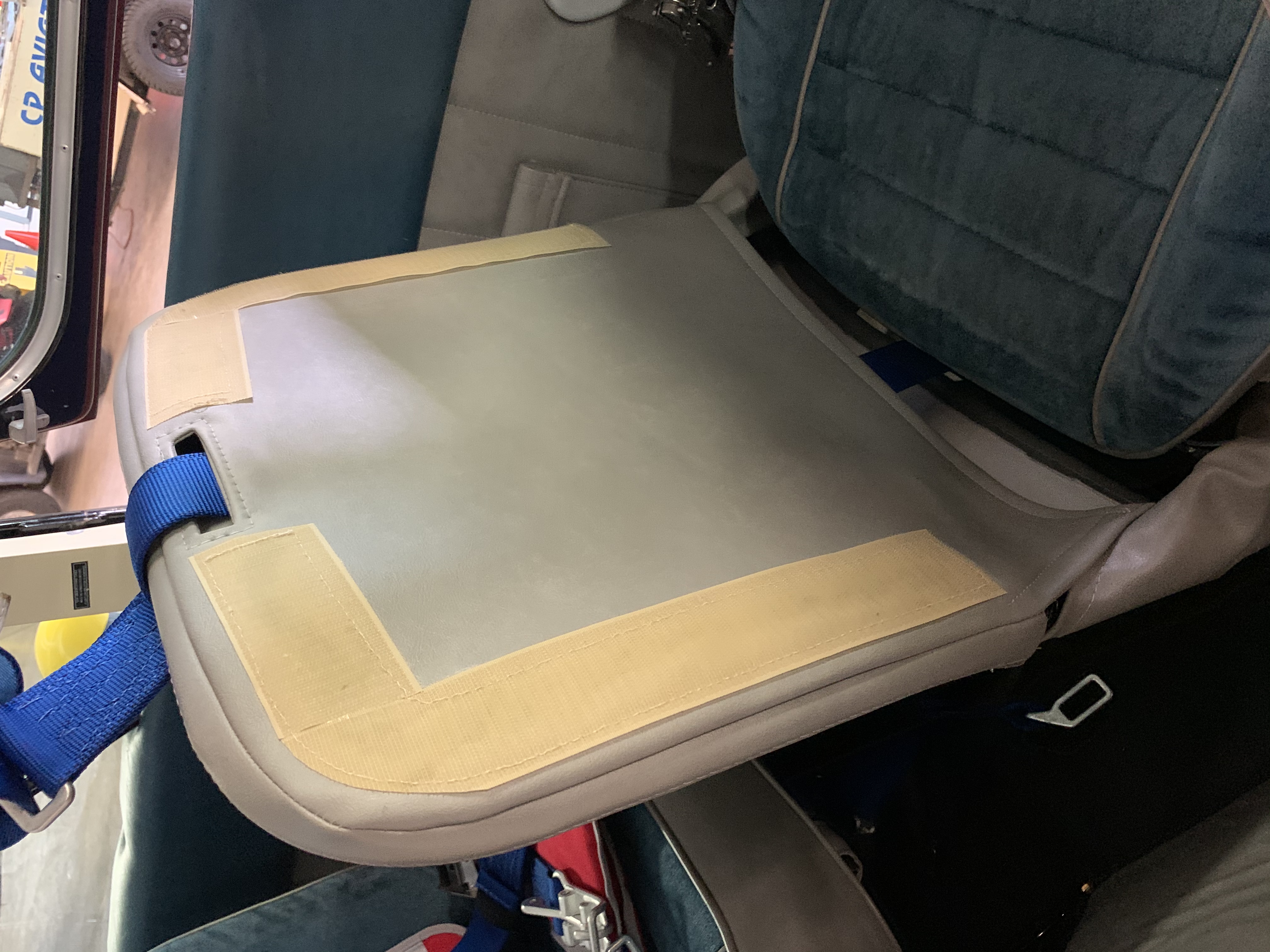
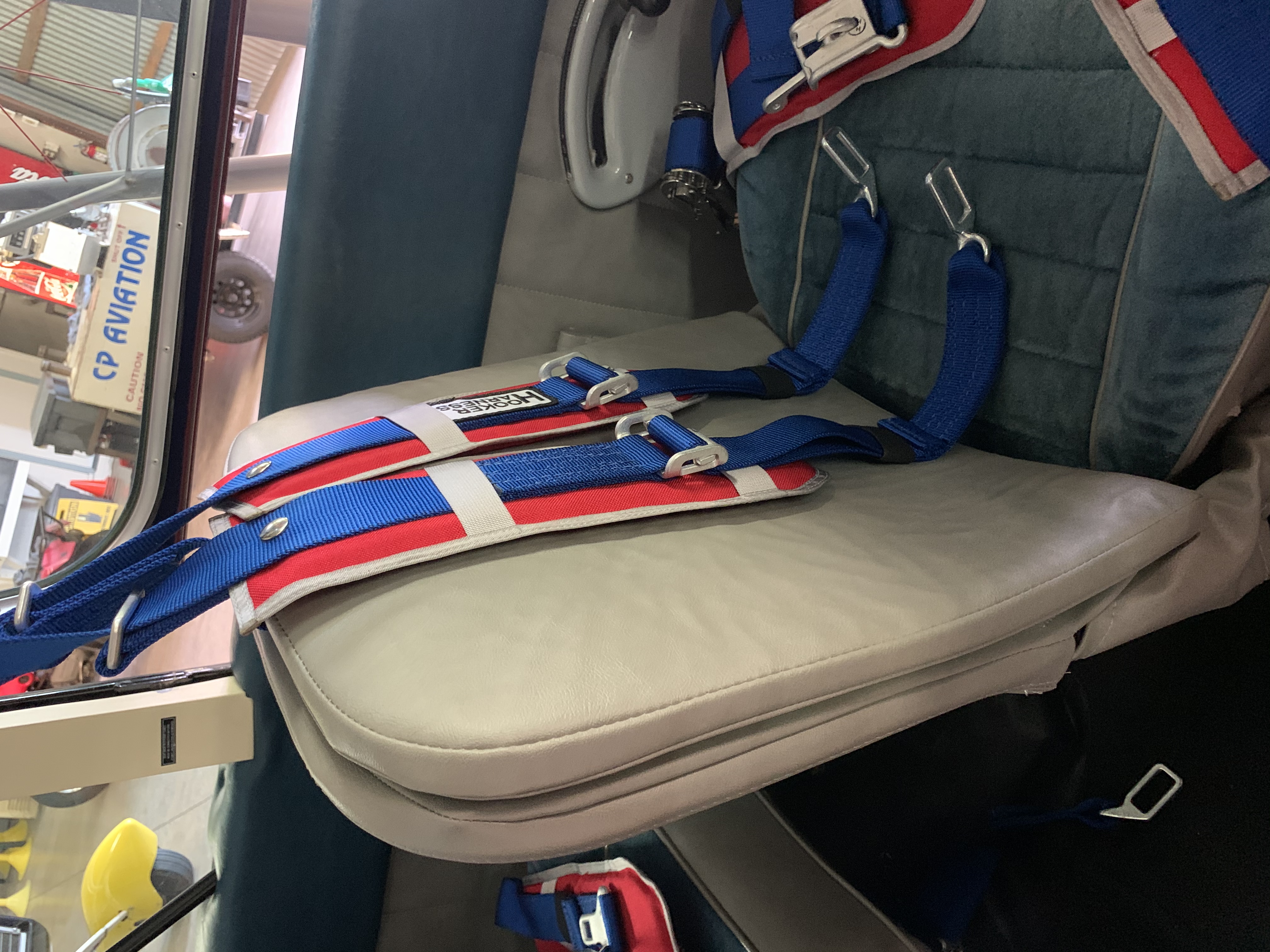
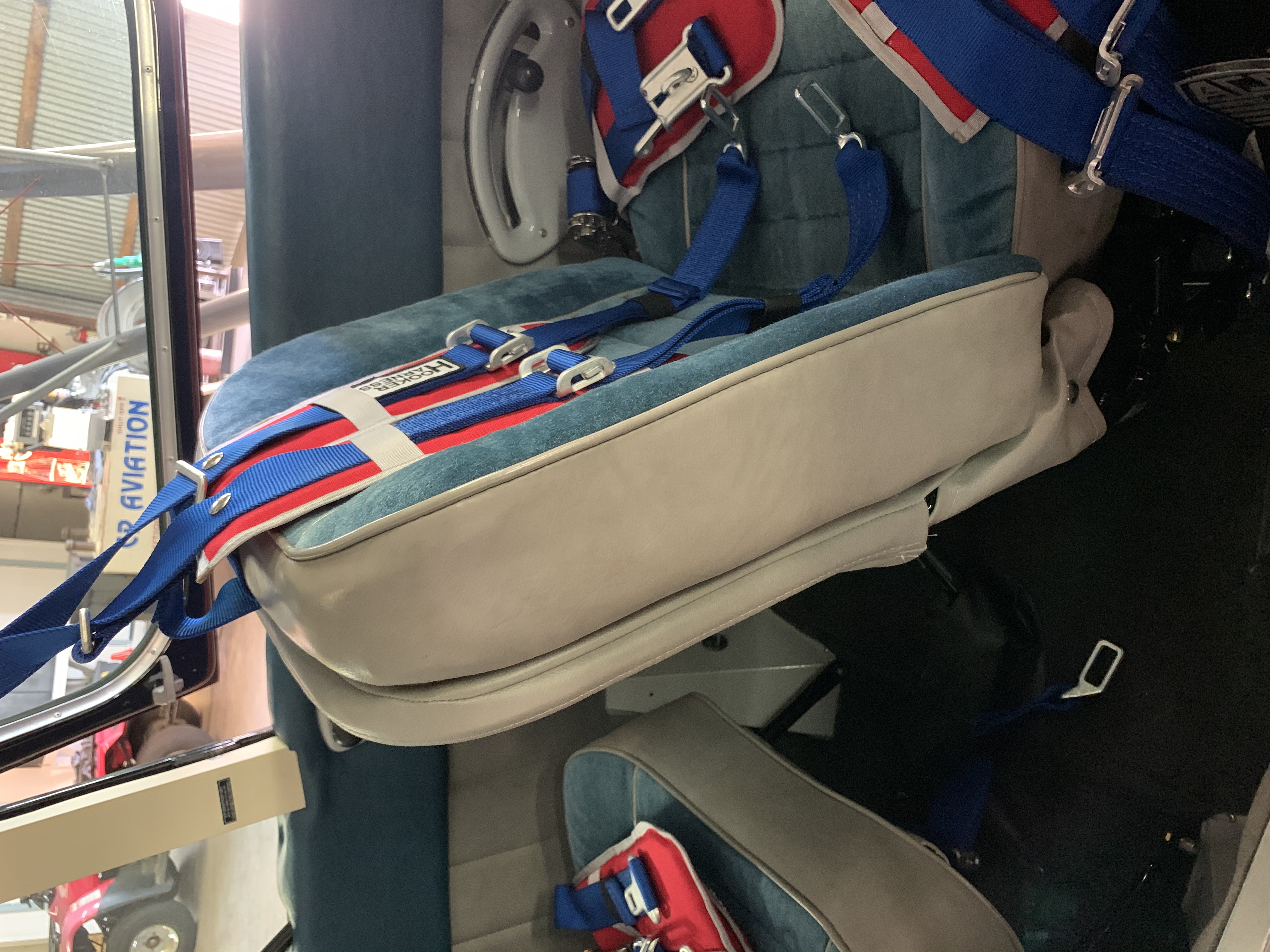
Lloyd had the factory add a plate to help reduce the damage to the parachute. The frame rails were right smack on the rip chord pins and that is why he also added the thin padding (center photo) to protect the parachute from the seats frame rails. Far right photo - for those not used to the Super D the thick cushion is for pleasure flying.
BIO
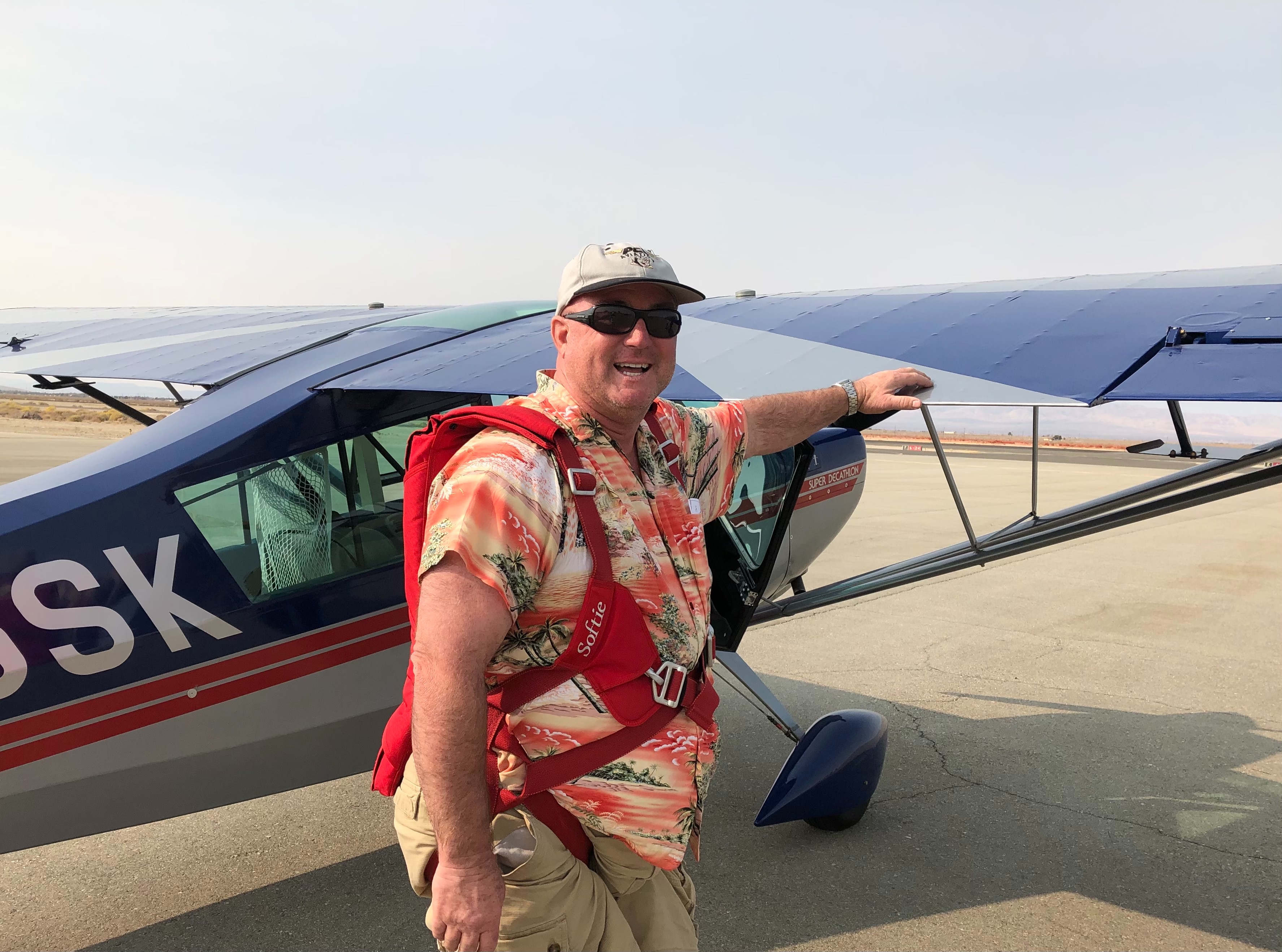
Lloyd is a pilot for United Airlines on the B-737 based in SFO. He lives on the Central Coast off California and has based his Super Decathlon ("Bessie" for aviatrix Bessie Coleman - a great name for career day discussions) in SMX - Santa Maria, Ca.
The Decathlon is the first airplane he and his wife have owned. In addition to sportsman aerobatics the couple flew it across the country from eastern Pennsylvania when they bought it. They have also spent two weeks flying it around New Mexico and Arizona one year. In 2 1/2 years of ownership, they have put 280 hours on Bessie.
Lloyd has just over 19,600 hours in over 50 different type aircraft. He is CFII, MEI with Gold Seal, ATP with type ratings in the B-737, B-747-400, Airbus A-320, Da-50 (Dassault Falcon), EMB-120 Brasilia, Experimental ratings in their L-29, L-39.
Back in 1989 in Gainesville Florida, Lloyd began his flight instruction and also flew commercially for a fellow that owned a John Deere dealership. He has flown corporate, 135 charter, B-747 freight pilot all over the world for Kalitta Air Cargo, Skywest Airlines and currently United.
Llyod has stayed connected to general aviation even with flying for the airlines and has 4,600 hours in single engine aircraft and over 1,300 hours flight instruction given. Pre-Covid-19 he would do career day lectures at local schools and emphasize ALL aspects of aviation careers and hobbies: Avionics tech, A&P, design and engineer, ATC, refurbishment, and paint as well as how to become a pilot or Flight attendant and how to get to that career goal no matter what your family financial situation.
Lloyd also likes to challenge traditional concepts of gender roles in jobs by emphasizing that women can be pilots or mechanics or ATC controllers. He is a member of IAC chapter 26 and has competed in five Southwest regional competitions: the last two at Sportsman level.

